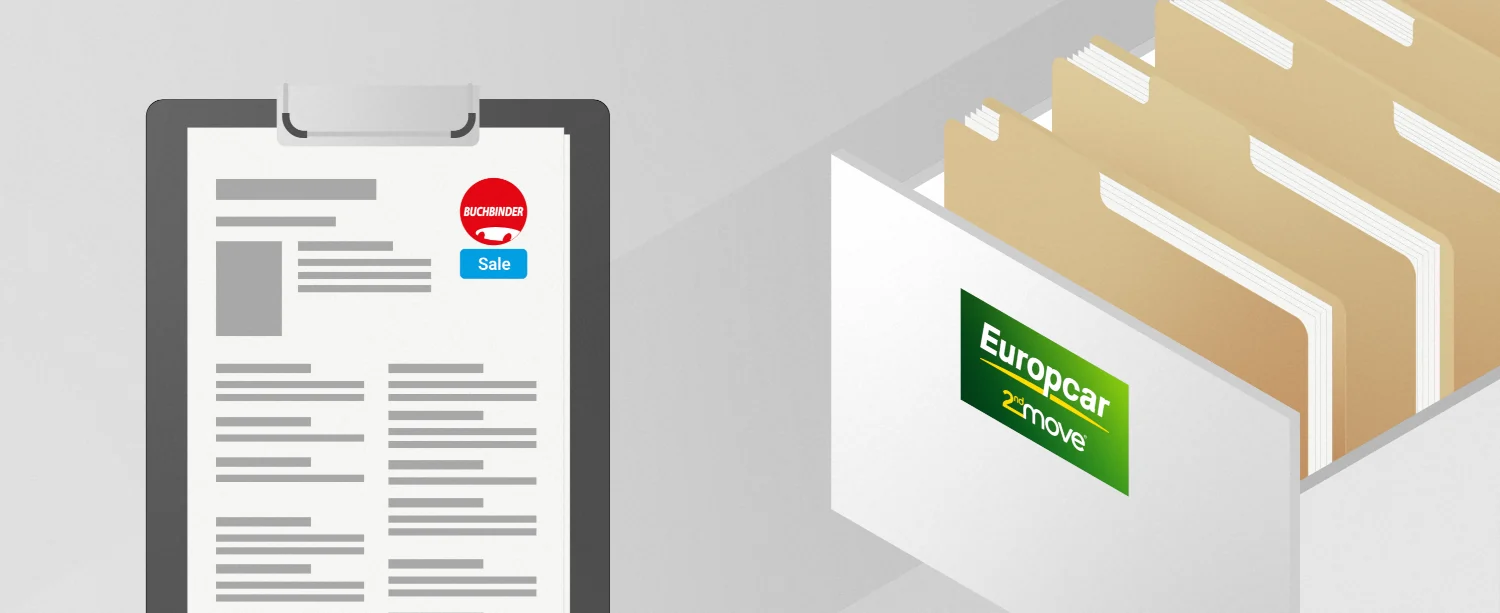By far the most popular purchasing channel for dealers are online car exchanges such as mobile.de and Autoscout24. When using the online portals, prospective buyers get a broad overview of the market and can search very specifically for the desired vehicles with the help of very extensive filter options. Because many of the used cars on offer come from private individuals, there are usually some at comparatively low prices among the hits. It is also positive for buyers that they do not incur any brokerage fees or commissions with the online car exchanges.
However, a major disadvantage of this purchase channel is that the vehicles have to be inspected and picked up at many different locations. This is time-consuming and - if the vehicle does not meet the requirements or no agreement can be reached - not always successful. There is no guarantee for the completeness and correctness of the information on the vehicle. Manipulated odometer readings, concealed accident damage or engine damage that is difficult to recognize at first glance are just a few of the pitfalls that a buyer can encounter here without the seller being held liable.
For this reason, and since a comprehensive on-site inspection is usually not possible and a test drive is not always granted, dealers should be able to quickly identify or at least guess as many defects as possible even with a superficial assessment. This requires a great deal of experience and expertise. In the event of a flop, the supposedly good business can easily turn into major financial damage.
On-site direct sales
On-site direct sales, where dealers and remarketers offer larger quantities of vehicles at collection points, is another typical acquisition channel for used car dealers. An advantage here compared to the individual purchase via an online car exchange is that there is a greater chance that there is at least one suitable vehicle for the prospective buyer. In some cases, the dealer can even purchase several vehicles for his own range in one fell swoop. This means that the effort involved in getting there and back pays off for the professional more often or more than when buying the items individually.
However, the fundamental disadvantage compared to online exchanges is that there are rarely real bargains, since it is a commercial offer. In addition, there is a fundamental risk here that the vehicles have been manipulated or have hidden defects. If interested, the buying dealer should therefore ensure that the cars have already been checked by independent experts and that all obvious errors have been documented in a status report. Alternatively, the direct seller should give the prospective buyer the opportunity to take a close look at the car himself on site - also on a lifting platform - and to take a test drive.
Online direct sales
In addition to this on-site direct sales, there are also providers who offer direct sales online. The advantage for the dealer is clear: he does not have to drive to the collection point to view and select the vehicles on site, but can select and purchase them from the office or, in principle, from the sofa. This can be very efficient, especially for experienced traders. Here, however, even more trust in the provider is required than with on-site direct sales. That's why only proven providers come into question. Also, for price and trust reasons, the seller should be a fleet owner and the vehicles should be from his own fleet. Without a middleman margin or service provider commission, better prices can usually be agreed here.
Irrespective of this, reports on the condition of independent experts and meaningful photos of the vehicles, in particular the visible defects, should also be accessible online. Based on the documents, the prospective buyer can largely estimate from a distance what prices he can later achieve with the respective vehicle and whether and to what extent repairs should be carried out. For questions or advice, it should be easy to get in touch with a competent contact person from the provider, preferably not just by email, but also by phone.
Also read the second part of the article on the most important purchase channels and what car dealers should pay attention to.
 To register, you will be redirected to the Europcar 2ndMove website. After registering, you can log in to Buchbinder-Sale.de.
Next
To register, you will be redirected to the Europcar 2ndMove website. After registering, you can log in to Buchbinder-Sale.de.
Next
 To register, you will be redirected to the Europcar 2ndMove website. After registering, you can log in to Buchbinder-Sale.de.
Next
To register, you will be redirected to the Europcar 2ndMove website. After registering, you can log in to Buchbinder-Sale.de.
Next






 Registration
Registration  Login
Login All vehicles
All vehicles  Direct Sale
Direct Sale
 Auctions
Auctions
 Service
Service
 Company
Company
 My Area
My Area 
